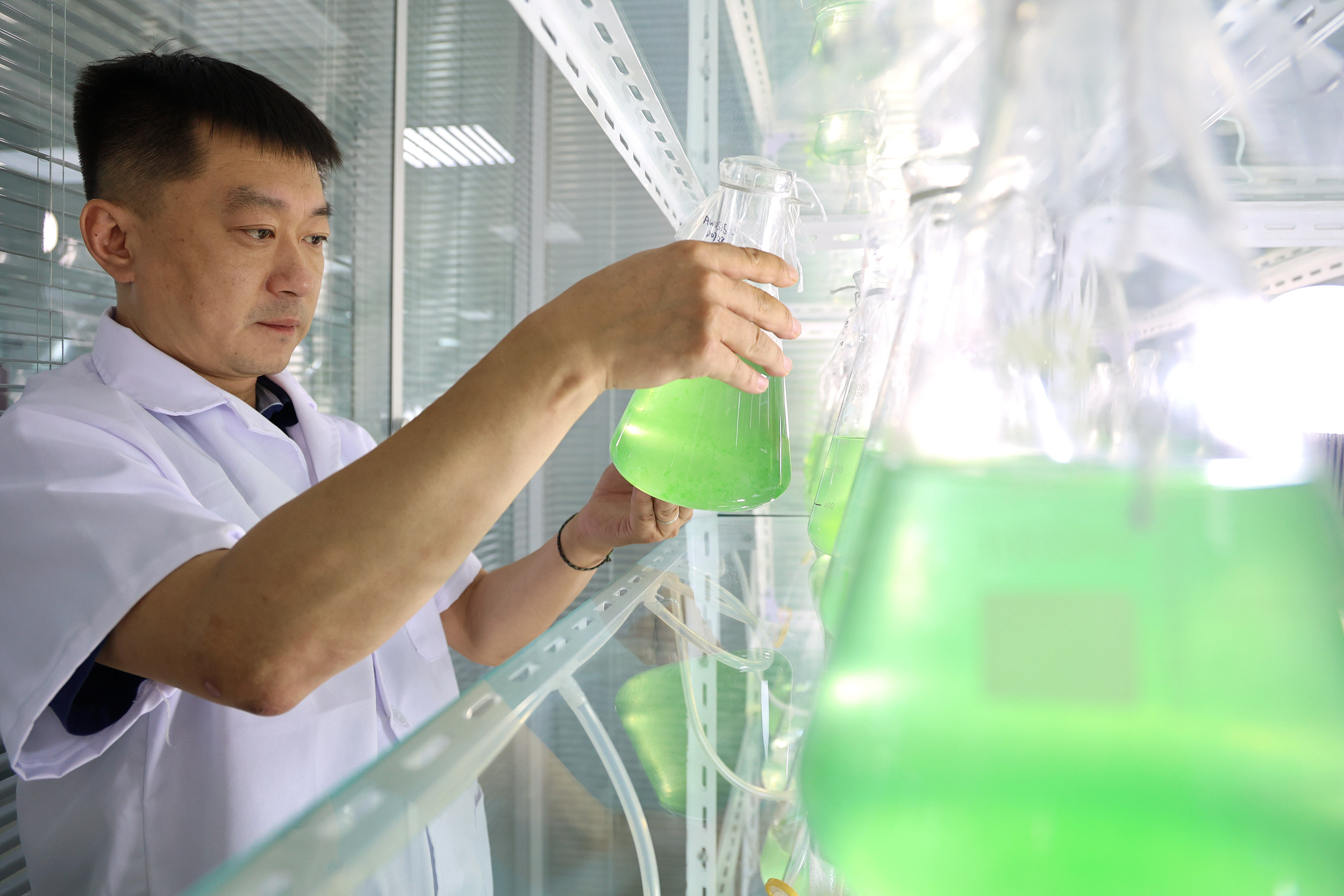
A researcher observes the growth of active algal cells at a laboratory of a biotech company in Dezhou city, Shandong province. (PHOTO: VCG)
By CHEN Chunyou & LIU Yin
China invested over 3 trillion RMB in research and development (R&D) in 2022, a year-on-year increase of 282 billion RMB, according to a communique on national science and technology expenditures last year released by the National Bureau of Statistics (NBS), Ministry of Science and Technology and Ministry of Finance on September 18.
New record for basic research funding
The total funding for basic research exceeded 200 billion RMB for the first time, accounting for 6.57 percent of R&D funding.
The proportion of basic research expenditure in R&D expenditure increased by 0.07 percentage point over the previous year, remaining above 6 percent for four consecutive years. The proportion of applied research expenditure also increased, reaching 11.3 percent.
China has implemented various measures to encourage corporate and social funds to support basic research for consolidating sci-tech innovation and enhancing original innovation, Xuan Zhaohui, a researcher from the Chinese Academy of Science and Technology for Development, told Science and Technology Daily. These measures include establishing joint funds and promoting social donations.
Xuan called the increase in basic research expenditure the result of improved awareness of original innovation across society and favorable measures, which have enhanced China's original innovation ability and facilitated high-quality socioeconomic development.
Enterprises contribute to R&D expenditure growth
In 2022, the R&D expenditure of enterprises was 2,387.86 billion RMB, signifying an 84-percent contribution to the growth of R&D funds, 4.6 percentage points higher than in 2021. Government-affiliated research institutions' expenditure was 381.44 billion RMB while universities spent 241.24 billion RMB.
"In recent years, enterprises have been prioritized in applications for science and technology plan projects. They also benefited from pre-tax deductions on R&D expenses and gaining access to scientific equipment because of the sharing mechanism," Xuan said.
The researcher added that these factors have motivated enterprises to engage in R&D activities, contributing to the increase in R&D investment.
The R&D expenditure of enterprises accounted for 77.6 percent of the total gross domestic R&D expenditure in 2022, a proportion close to those in Japan, the Republic of Korea and the U.S.
China's high-tech manufacturing is a pillar of industrial transformation and upgrading. Not surprisingly, R&D investment in this sector crossed 600 billion RMB in 2022, an increase of 14.5 percent over the previous year.?
Zhang Qilong, an NBS official, said the increased R&D intensity in key fields has created conducive conditions for core technology research and improvement of industrial capabilities.
According to the communique, the number of provinces and municipalities with R&D funding exceeding 100 billion RMB has increased to 12. In terms of regional distribution of R&D expenditure, Beijing, Shanghai and the Guangdong-Hong Kong-Macao Greater Bay Area, as well as the Yangtze River Delta region have played a crucial role in spearheading the advancements.
Zhang said there should be targeted support for key technology fields while investment in the commercialization of research results should be increased to improve funding efficiency.
The trio will conduct a series of experiments in fields such as life science, fluid physics, combustion science and materials science. Notably, this is the first time that fruit flies have been taken on a Chinese space mission as experimental subjects. What made scientists choose fruit flies? What experiment will they undergo?
